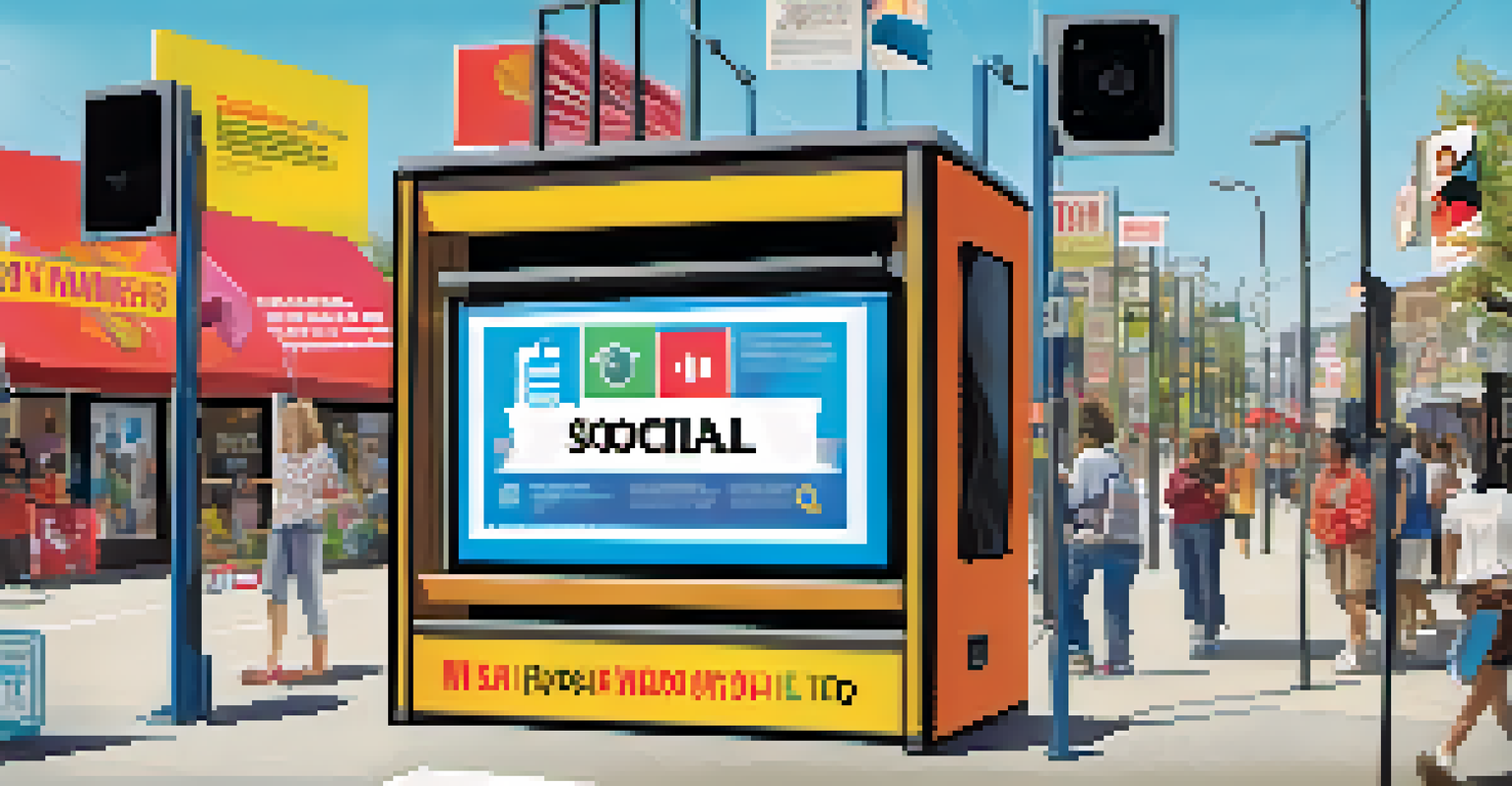Public Awareness Campaigns: A Community Approach to Recovery

Understanding Public Awareness Campaigns in Recovery
Public awareness campaigns play a pivotal role in recovery by educating communities about specific issues, such as substance abuse or mental health. These campaigns are designed to inform the public and foster a sense of urgency around recovery needs. By highlighting stories and statistics, they create a narrative that resonates with community members, encouraging them to participate in recovery efforts.
Awareness is the first step to recovery.
For instance, a local campaign might share testimonials from individuals who have successfully navigated their recovery journey. This personal touch not only humanizes the issue but also inspires others who are struggling. When people see relatable stories, they begin to understand that recovery is possible and that they are not alone in their struggles.
Moreover, these campaigns often leverage social media and local events to reach a wider audience. This approach helps to break down stigma and fosters an inclusive environment where everyone feels empowered to seek help or support others in their recovery journey.
Engaging the Community: A Collaborative Approach
A successful public awareness campaign relies heavily on community engagement. By involving local stakeholders, such as schools, businesses, and healthcare providers, campaigns can address specific community needs. This collaboration ensures that the message is relevant and resonates well with the audience, making it more effective.

For example, a campaign focused on mental health might partner with local schools to promote mental well-being among students. Workshops, seminars, and informational booths can be set up to disseminate important information while fostering a supportive atmosphere. This collaborative effort not only raises awareness but also builds a network of support within the community.
Community Engagement is Key
Involving local stakeholders ensures that public awareness campaigns resonate with community needs and enhance participation.
Additionally, community members often have unique insights into the challenges they face. By incorporating their feedback, campaigns can adapt their strategies and messaging, ensuring they remain impactful and relatable. This sense of ownership can significantly enhance community participation and investment in the recovery process.
Creating Compelling Messages that Resonate
Crafting a compelling message is crucial for any public awareness campaign. The message should be clear, empathetic, and actionable, encouraging individuals to engage with the content. It’s important to frame the narrative in a way that highlights both the challenges and the successes of recovery.
The greatest gift you can give someone is your time, your attention, your love, and your concern.
For instance, instead of merely presenting statistics about addiction, a campaign might focus on recovery success stories that illustrate hope and resilience. This storytelling approach not only captures attention but also instills a sense of possibility among those facing similar challenges. When people see the potential for success, they are more likely to seek help and support.
Moreover, using visuals and relatable content can enhance the campaign’s reach. Infographics, videos, and social media posts that depict real-life scenarios can make the message more digestible and shareable. This not only broadens the campaign's reach but also encourages community conversations around recovery topics.
Utilizing Multiple Channels for Greater Reach
To maximize impact, public awareness campaigns should utilize a variety of communication channels. Traditional methods like flyers, posters, and community events can be complemented by digital platforms, including social media and email newsletters. This multi-channel approach helps ensure the message reaches a diverse audience.
Consider a campaign that combines local radio announcements with social media hashtags and community workshops. By diversifying outreach methods, the campaign can engage individuals who may not be reached through one single channel. This strategy not only increases visibility but also fosters a sense of community involvement.
Compelling Messaging Drives Impact
Crafting clear, empathetic, and actionable messages, particularly through storytelling, encourages individuals to engage with recovery efforts.
Furthermore, leveraging local influencers or community leaders can amplify the message. When respected figures advocate for a cause, it can lend credibility and encourage others to join the effort. This grassroots approach can significantly enhance the campaign's effectiveness and create lasting change within the community.
Measuring the Impact of Campaigns on Recovery
Evaluating the effectiveness of public awareness campaigns is essential for understanding their impact. Gathering data through surveys, interviews, or social media engagement can provide valuable insights into how well the message resonates with the community. This feedback is crucial for refining future campaigns and ensuring continued relevance.
For example, a campaign might track the number of individuals seeking help after its launch. By comparing this data to previous periods, organizers can assess whether their efforts are translating into tangible outcomes. Additionally, community feedback can help identify areas for improvement and guide the development of new initiatives.
Moreover, measuring success goes beyond just numbers; it also includes observing shifts in community attitudes and awareness. A successful campaign may lead to increased discussions around recovery, reduced stigma, and greater community support for individuals in need, all of which are essential for fostering a healthy environment.
Building Long-Lasting Support Networks
One of the most significant outcomes of public awareness campaigns is the establishment of long-lasting support networks. These networks can provide ongoing assistance to individuals in recovery, ensuring they have access to resources and community connections. Building a culture of support is vital for sustained recovery efforts.
For instance, a campaign might facilitate the creation of support groups that meet regularly, offering a safe space for individuals to share their experiences and challenges. These groups can be instrumental in building relationships and fostering a sense of belonging, which is crucial for recovery.
Utilize Diverse Channels for Outreach
Employing various communication methods, from traditional flyers to social media, broadens the campaign's reach and fosters community involvement.
Additionally, maintaining these networks requires continuous engagement and follow-up. Campaign organizers can host regular events, workshops, or check-ins to keep the community connected and motivated. This ongoing commitment reinforces the idea that recovery is a collective journey, where everyone has a role to play in supporting one another.
The Future of Community-Driven Recovery Campaigns
As communities continue to navigate the complexities of recovery, the future of public awareness campaigns looks promising. With advancements in technology and communication, campaigns can become even more personalized and engaging. Tailoring messages to specific demographics and utilizing data-driven insights will enhance their effectiveness.
Moreover, the growing recognition of mental health and substance abuse issues highlights the need for continued advocacy and awareness. Communities are increasingly prioritizing support systems, and public awareness campaigns can play a critical role in this transformation. By focusing on education and empowerment, these campaigns can foster a culture of understanding and support.

Ultimately, the success of community-driven recovery campaigns hinges on collaboration, creativity, and a commitment to inclusivity. As we look to the future, it’s clear that when communities come together, they can create powerful movements that not only raise awareness but also lead to tangible change in the lives of individuals seeking recovery.